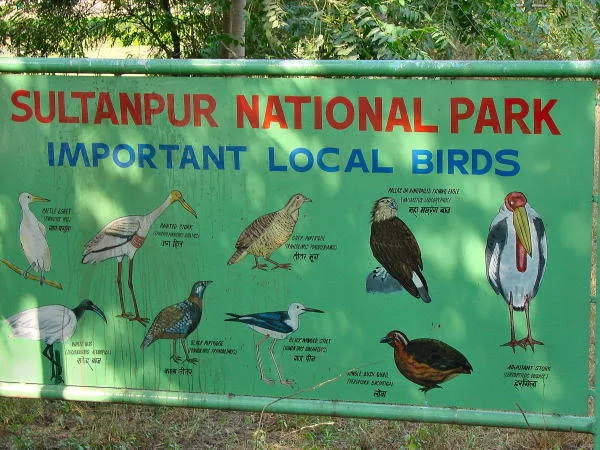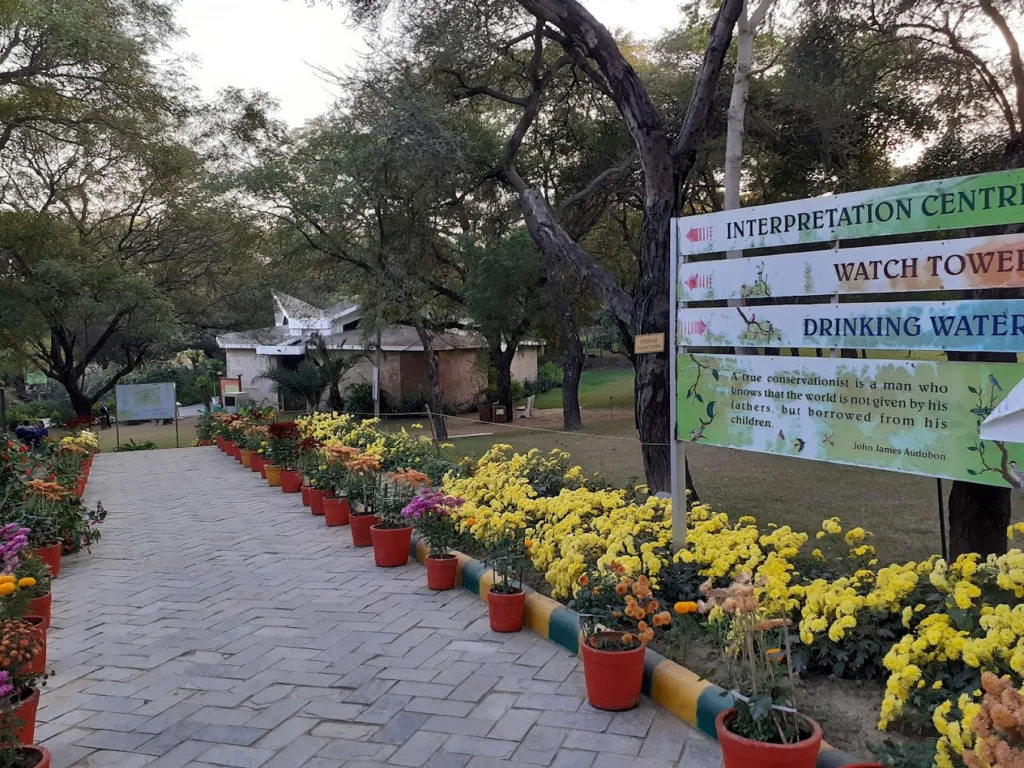Sultanpur National Park is a captivating nature reserve located in the state of Haryana, India. It spreads across a vast area, this park has become a sanctuary for a diverse range of flora and fauna, making it a paradise for nature enthusiasts and bird watchers.
The park is nestled in the tranquil surroundings of the Sultanpur village offering a serene escape from the bustling city life. Established in 1972, this national park was initially developed as a water reservoir and later transformed into a protected area to conserve and preserve the local biodiversity.
In this article, we will explore the fascinating features of the Park and discover why it is a must-visit destination for anyone seeking an immersive wildlife experience.
History and Background
The history of Sultanpur National Park dates back to the early 19th century when the British administration constructed the Sultanpur Lake to provide irrigation water for nearby farmlands.
Over time, this area attracted a wide variety of migratory birds, drawing the attention of nature lovers and researchers. Later, the government declared it a national park to safeguard its natural treasures after recognizing its ecological significance.

Geographical Location
Situated in the Gurugram district of Haryana, Sultanpur Park is conveniently located just 40 kilometers away from the bustling city of Delhi.
Its proximity to the national capital makes it easily accessible for both domestic and international tourists. The park spans over an area of approximately 1.43 square kilometers, providing ample space for the flourishing flora and fauna.
Biodiversity
Sultanpur National Park boasts an impressive biodiversity, showcasing a delicate balance of ecosystems. The park is home to over 250 species of resident and migratory birds, making it a paradise for bird enthusiasts. Additionally, it houses numerous mammal, reptile, and amphibian species, along with a rich diversity of flora.

Flora and Fauna
The park is adorned with lush greenery and a wide variety of plant species. The landscape is dominated by shrubs, grasslands, and trees such as Acacia, Eucalyptus, Neem, and Dhok. These plant species provide vital habitat for the diverse wildlife residing in the park.
Avian Population
The Park is renowned for its avian population, attracting birdwatchers from far and wide. During the winter months, the park becomes a temporary home to a plethora of migratory birds, including Siberian Cranes, Pelicans, Flamingos, and various species of ducks.
The park also serves as a breeding ground for several resident bird species, offering a year-round birding spectacle.
Wildlife Conservation
The main objective of Sultanpur Park is to preserve and conserve the local wildlife and their habitats. The park authorities actively engage in various conservation efforts, including habitat restoration, anti-poaching measures, and community education programs.
These initiatives ensure the sustainable growth and protection of the park’s rich biodiversity for future generations to appreciate.

Visitor Facilities
The Park provides excellent visitor facilities to enhance the overall experience for nature enthusiasts. The park offers well-maintained walking trails, bird-watching towers, and viewing hides strategically placed to provide optimal vantage points for observing the wildlife.
Additionally, there are picnic spots, a museum, and an interpretation center where visitors can learn more about the park’s flora, fauna, and conservation efforts.
Best Time to Visit
The ideal time to visit Sultanpur National Park is during the winter season, from October to March, as this is when the migratory birds arrive in large numbers. The weather is pleasant during this time, providing a comfortable environment for exploring the park.
However, the park’s beauty can be enjoyed throughout the year, with each season offering a unique charm.
Things to Do
Visitors to Sultanpur Park can engage in a variety of activities to immerse themselves in the natural wonders of the park. Bird watching is undoubtedly the highlight, allowing enthusiasts to witness a plethora of avian species in their natural habitat.
Photography, nature walks, and picnicking are also popular activities, offering a chance to relax and rejuvenate amidst the scenic beauty of the park.

Nearby Attractions
In addition to its own breathtaking beauty, this national park is located in close proximity to several other attractions worth exploring.
The bustling city of Delhi, with its rich historical and cultural sites, is just a short drive away. Additionally, the neighboring Sultanpur Bird Sanctuary and Damdama Lake present additional opportunities for nature lovers to explore the region’s natural treasures.
How to Reach?
Sultanpur National Park is conveniently connected to major cities and transportation hubs.
The nearest airport is Indira Gandhi International Airport in Delhi, which offers both domestic and international flights. From the airport, one can hire a taxi or use public transportation to reach the park.
The nearest railway station is Gurgaon Railway Station. It is also well-connected to other major cities in India. Local buses and taxis are available from Gurgaon to the park.

Safety Guidelines
While visiting Sultanpur Park, it is essential to follow certain safety guidelines to ensure a pleasant and secure experience. Visitors should avoid disturbing wildlife, refrain from littering, and adhere to the designated trails and viewing areas.
It is advisable to carry sufficient water, wear comfortable clothing and footwear, and apply sunscreen for protection against the sun. Following these guidelines will help preserve the park’s ecosystem and ensure a positive experience for all.
Wrapping Up
Sultanpur National Park stands as a testament to the beauty and diversity of India’s natural heritage. Its serene surroundings, vibrant bird population, and conservation efforts make it a true haven for nature enthusiasts.
Whether you are an avid birdwatcher, a wildlife photographer, or simply seeking solace in nature, a visit to Sultanpur Park will leave you captivated and inspired by the wonders of the natural world.
Frequently Asked Questions
- Is Sultanpur National Park open throughout the year?
Yes, the park is open year-round, offering visitors a chance to witness its beauty in every season.
- Can I bring my own food and have a picnic in the park?
Indeed, the park has designated picnic spots where visitors can enjoy their own food amidst the natural surroundings.
- Are there accommodation facilities available near the park?
Yes, there are several accommodation options available near Sultanpur Park, ranging from budget guesthouses to luxury resorts.
- Is photography allowed in the park?
Yes, photography is permitted in Sultanpur National Park. It is a great opportunity to capture the stunning flora, fauna, and birdlife.
- Are there any guided tours available in the park?
The park offers guided tours conducted by knowledgeable naturalists who provide valuable insights into the park’s ecology and wildlife.

